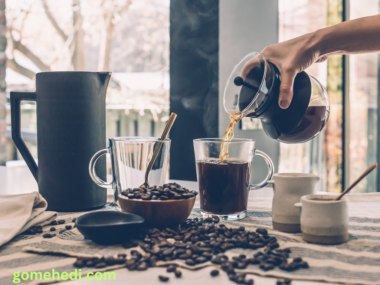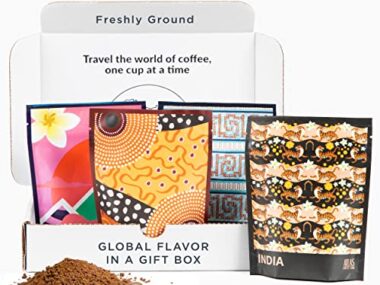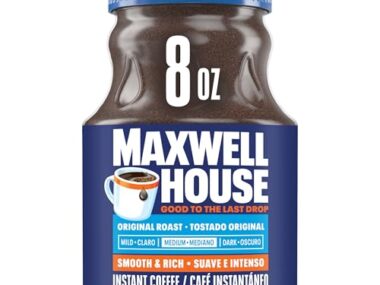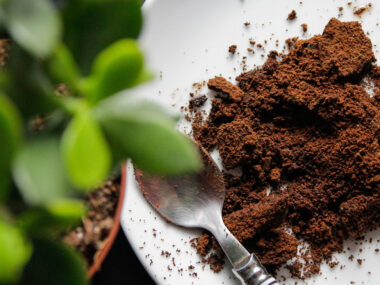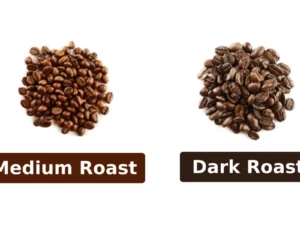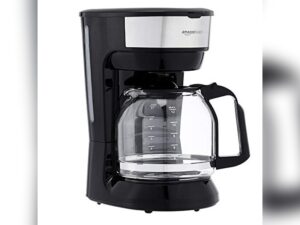The best coffee in the world depends on taste, origin, and brewing. If you’re asking which is the best coffee in the world, our guide highlights top beans and blends.
But which coffee truly stands out? Coffee lovers are always on the hunt for that perfect cup. With so many options, it’s hard to say which is the best. From the rich, bold flavors of Ethiopian beans to the smooth, mild taste of Colombian coffee, the variety is vast.
Each region brings its unique touch to the coffee experience. Some people prefer the strong, dark roasts, while others enjoy light, fruity notes. The brewing method also adds to the complexity of flavors. In this blog post, we will explore different coffees from around the world. We’ll look at what makes each unique and help you find your favorite. Let’s dive into the world of coffee and discover which one might be the best for you.
Top Coffee Regions
The quest for the best coffee in the world often leads to exploring different coffee regions. Each region offers unique flavors and characteristics. This post delves into the top coffee regions renowned for producing exceptional coffee. Let’s explore South America, Africa, and Asia.
South America
South America is one of the most renowned coffee regions. Its diverse landscapes and ideal climates make it a perfect place for coffee cultivation. Here are some key countries:
- Brazil: The largest coffee producer in the world. Known for its smooth and nutty flavors.
- Colombia: Famous for its well-balanced coffee with rich, mild flavor and a hint of acidity.
- Peru: Offers a variety of coffee with notes of fruit and a bright acidity.
Brazilian coffee is often used in espresso blends for its creamy body and chocolatey notes. Colombian coffee, grown in the Andean region, is celebrated for its bright acidity and fruity notes. Peruvian coffee, from the high-altitude regions, provides a clean and sweet cup with floral undertones.
| Country | Flavor Profile |
|---|---|
| Brazil | Nutty, Chocolatey |
| Colombia | Fruity, Balanced |
| Peru | Fruity, Floral |
Africa
Africa is known for its rich coffee heritage. The continent’s coffee is famous for its vibrant and complex flavors. Key African coffee-producing countries include:
- Ethiopia: The birthplace of coffee. Known for its wild, fruity, and floral flavors.
- Kenya: Produces coffee with bright acidity, full body, and strong fruity notes.
- Tanzania: Known for its coffee with a wine-like acidity and berry flavors.
Ethiopian coffee, especially from regions like Yirgacheffe, is prized for its floral and citrusy notes. Kenyan coffee offers a full-bodied experience with a bright, wine-like acidity. Tanzanian coffee, often grown on the slopes of Mount Kilimanjaro, provides unique berry and wine-like flavors.
| Country | Flavor Profile |
|---|---|
| Ethiopia | Fruity, Floral |
| Kenya | Fruity, Bright |
| Tanzania | Berry, Wine-like |
Asia
Asia offers a diverse range of coffee flavors. The continent’s unique climates and terrains contribute to its distinct coffee profiles. Key coffee-producing countries in Asia include:
- Indonesia: Known for its earthy and spicy coffee with a full body.
- Vietnam: One of the largest producers of robusta coffee, known for its strong and bold flavor.
- India: Produces coffee with a unique balance of acidity, body, and flavor.
Indonesian coffee, especially from Sumatra and Java, is known for its deep, rich flavors with a hint of spice. Vietnamese coffee, often used in traditional Vietnamese iced coffee, offers a robust and intense experience. Indian coffee, particularly from the regions of Karnataka and Kerala, provides a balanced cup with spicy and nutty undertones.
| Country | Flavor Profile |
|---|---|
| Indonesia | Earthy, Spicy |
| Vietnam | Strong, Bold |
| India | Spicy, Nutty |

Credit: www.reddit.com
Popular Coffee Varieties
With so many coffee varieties available, it can be challenging to choose the best one. Some coffees are known for their unique flavors, while others are praised for their strength and richness. Popular coffee varieties include Arabica, Robusta, and Liberica. Each type has its own distinct characteristics that appeal to different tastes and preferences.
Arabica
Arabica coffee is one of the most popular and widely consumed coffee varieties in the world. It is known for its smooth, slightly acidic flavor profile, making it a favorite among coffee enthusiasts. Here are some key points about Arabica coffee:
- Flavor Profile: Arabica beans offer a wide range of flavors, including hints of fruit, sugar, and berries.
- Growing Conditions: These beans thrive in high altitudes, usually between 600 and 2000 meters above sea level.
- Caffeine Content: Arabica has less caffeine compared to other coffee varieties, making it a great option for those sensitive to caffeine.
Arabica beans are often used in premium coffee blends due to their complex flavors and aromatic qualities. The table below provides a quick comparison between Arabica and other coffee varieties:
| Coffee Variety | Flavor Profile | Caffeine Content |
|---|---|---|
| Arabica | Sweet, Fruity, Floral | 1.2% – 1.5% |
| Robusta | Bitter, Earthy | 2.2% – 2.7% |
| Liberica | Woody, Smoky | 1.5% – 1.7% |
Robusta
Robusta coffee is known for its bold and strong flavor. It is often used in espresso blends due to its rich and creamy texture. Here are some important details about Robusta coffee:
- Flavor Profile: Robusta beans have a robust, earthy flavor with notes of chocolate and nuts.
- Growing Conditions: These beans are more resilient and can be grown at lower altitudes, usually between 0 and 800 meters above sea level.
- Caffeine Content: Robusta has a higher caffeine content than Arabica, making it a stronger coffee option.
Robusta beans are often more affordable than Arabica due to their easier growing conditions. They are commonly used in instant coffee and espresso blends. The table below highlights some of the differences between Robusta and other coffee varieties:
| Coffee Variety | Flavor Profile | Caffeine Content |
|---|---|---|
| Arabica | Sweet, Fruity, Floral | 1.2% – 1.5% |
| Robusta | Bitter, Earthy | 2.2% – 2.7% |
| Liberica | Woody, Smoky | 1.5% – 1.7% |
Liberica
Liberica coffee is less common but offers a unique flavor that is loved by many. It is known for its larger beans and distinctive taste. Here are some key aspects of Liberica coffee:
- Flavor Profile: Liberica beans have a woody, smoky flavor with floral and fruity undertones.
- Growing Conditions: These beans thrive in hot and humid climates, often grown in lowland areas.
- Caffeine Content: Liberica has a moderate caffeine content, making it a balanced option for coffee lovers.
Liberica beans are unique in appearance and flavor, setting them apart from Arabica and Robusta. They are often enjoyed by those seeking a different coffee experience. The table below provides a quick comparison between Liberica and other coffee varieties:
| Coffee Variety | Flavor Profile | Caffeine Content |
|---|---|---|
| Arabica | Sweet, Fruity, Floral | 1.2% – 1.5% |
| Robusta | Bitter, Earthy | 2.2% – 2.7% |
| Liberica | Woody, Smoky | 1.5% – 1.7% |
Coffee Grading Systems
When exploring which is the best coffee in the world, understanding coffee grading systems is crucial. These systems help differentiate high-quality beans from the rest. Coffee grading involves evaluating beans based on factors like size, shape, color, and defects. This ensures consumers get the best possible coffee experience.
Specialty Coffee
Specialty coffee stands out due to its exceptional quality and unique flavors. This type of coffee undergoes rigorous grading by certified Q Graders. These experts evaluate beans based on several criteria:
- Flavor: The coffee’s taste profile, including notes like fruity, nutty, or chocolatey.
- Acidity: The brightness or tanginess of the coffee.
- Body: The weight or thickness of the coffee on the palate.
- Aroma: The scent of the coffee, which can range from floral to spicy.
- Balance: The harmony between the flavor, acidity, and body.
Specialty coffee must score at least 80 out of 100 on the Specialty Coffee Association (SCA) cupping scale. The grading process also involves examining the beans for defects. Beans with no primary defects and minimal secondary defects qualify as specialty coffee.
Here’s a simple table summarizing the key points:
| Criteria | Description |
|---|---|
| Flavor | Unique taste notes |
| Acidity | Brightness or tanginess |
| Body | Weight on the palate |
| Aroma | Scent of the coffee |
| Balance | Harmony of flavors |
| Defects | Minimal to none |
Specialty coffee is often single-origin, meaning it comes from one specific region or farm. This allows for unique characteristics and traceability. Coffee enthusiasts appreciate the attention to detail and quality in specialty coffee.
Commercial Coffee
Commercial coffee, often found in supermarkets, differs significantly from specialty coffee. This type of coffee is typically a blend of beans from various regions. The focus here is on consistency and affordability rather than unique flavors.
The grading system for commercial coffee is less stringent. Beans are often evaluated based on size and the presence of defects. Here’s a simple breakdown:
- Size: Beans are sorted by size, with larger beans generally considered better.
- Defects: Beans are checked for defects, but the standards are more lenient.
Commercial coffee beans are usually roasted to a darker profile. This masks inconsistencies in the beans and provides a uniform taste. The focus is on producing a consistent product that appeals to a broad audience.
Here’s a table to highlight the differences:
| Criteria | Description |
|---|---|
| Size | Sorted by size |
| Defects | Checked but lenient standards |
| Flavor | Consistent and uniform |
| Roast | Darker roast |
Commercial coffee caters to those who prefer a reliable and affordable cup of coffee. While it may lack the unique characteristics of specialty coffee, it remains a popular choice for daily consumption.

Credit: www.youtube.com
Brewing Methods
Choosing the best coffee in the world involves not just the beans but also the brewing method. Different methods bring out unique flavors and characteristics of the coffee. Let’s explore some popular brewing methods to find out how they influence the taste of your cup of coffee.
French Press
The French Press, also known as a press pot or plunger pot, is a classic brewing method. It offers a full-bodied and rich flavor. This method involves steeping coarse coffee grounds in hot water for a few minutes and then pressing the grounds out.
Here’s a simple guide to using a French Press:
- Boil water and let it cool for a minute.
- Add coarse coffee grounds to the French Press (about 2 tablespoons per 6 ounces of water).
- Pour the hot water over the grounds, ensuring all grounds are saturated.
- Place the lid on the French Press and let it steep for 4 minutes.
- Slowly press the plunger down to separate the grounds from the brewed coffee.
- Pour and enjoy your coffee.
Advantages of French Press:
- Full-bodied, rich flavor.
- Simple and inexpensive equipment.
- Control over steeping time.
Disadvantages of French Press:
- Can result in sediment in your coffee.
- Requires coarse grind, which may need a special grinder.
Espresso
Espresso is a popular brewing method known for its strong, concentrated coffee. It requires a special machine that forces hot water through finely-ground coffee at high pressure.
Steps to make an Espresso:
- Preheat your espresso machine.
- Grind coffee beans to a fine consistency.
- Tamp the grounds evenly into the portafilter.
- Lock the portafilter into the machine.
- Start the machine and brew for about 25-30 seconds.
- Collect the espresso shot in a cup.
Advantages of Espresso:
- Strong and intense flavor.
- Quick brewing time.
- Base for many coffee drinks like lattes and cappuccinos.
Disadvantages of Espresso:
- Expensive equipment.
- Requires skill to perfect.
Pour Over
The Pour Over method is favored for its ability to highlight the intricate flavors of coffee. It involves pouring hot water over coffee grounds in a filter, allowing the water to drip through to a carafe or mug.
Steps to make a Pour Over:
- Boil water and let it cool slightly.
- Place a filter in the dripper and rinse it with hot water.
- Add medium-fine coffee grounds to the filter (about 1 tablespoon per 6 ounces of water).
- Pour a small amount of water over the grounds to bloom them.
- Slowly pour the remaining water over the grounds in a circular motion.
- Let the coffee drip through and then serve.
Advantages of Pour Over:
- Clean and bright flavor.
- Control over brewing variables.
- Inexpensive equipment.
Disadvantages of Pour Over:
- Requires patience and time.
- Needs precise pouring technique.
Taste Profiles
Exploring the best coffee in the world involves diving into its taste profiles. Coffee lovers cherish the unique flavors that different coffee beans offer. From fruity and floral to nutty and chocolatey, each coffee has its distinct taste profile that sets it apart. Let’s take a closer look at the flavor notes and aroma characteristics of some of the finest coffees globally.
Flavor Notes
The flavor notes of coffee are what make each cup unique. These notes can vary widely depending on the region, processing method, and roast level. Here are some common flavor notes found in the best coffees:
- Fruity: Coffees from Ethiopia often have bright, fruity notes like blueberry, strawberry, and citrus.
- Floral: Some high-altitude coffees, especially from Yemen, have delicate floral hints like jasmine or rose.
- Nutty: Central American coffees, such as those from Guatemala, may have nutty flavors like almond or hazelnut.
- Chocolatey: Colombian and Brazilian coffees are known for their rich, chocolatey notes.
- Spicy: Coffees from Sumatra can have earthy, spicy notes like clove and cinnamon.
These flavor notes are often influenced by the coffee’s growing conditions. Soil type, altitude, and climate all play a role. The processing method also impacts flavor. For example, natural processed coffees tend to have more fruity notes, while washed coffees might be cleaner and more acidic.
Aroma Characteristics
The aroma of coffee is an essential part of the tasting experience. It’s the first thing you notice when you brew a fresh cup. Here are some key aroma characteristics of world-class coffees:
- Fruity: The aroma of fruity coffees can remind you of fresh berries, citrus, or even tropical fruits.
- Floral: Floral aromas can be subtle yet enchanting, with hints of jasmine, lavender, or rose petals.
- Nutty: Nutty aromas often bring to mind the scent of roasted almonds, peanuts, or hazelnuts.
- Chocolatey: The comforting smell of chocolatey coffees can evoke memories of cocoa or dark chocolate.
- Spicy: Spicy aromas might include notes of cinnamon, clove, or even pepper, adding a warm, complex scent.
The aroma gives you a hint of what to expect in terms of flavor. It’s influenced by the coffee’s origin, processing, and roast level. Lightly roasted coffees might have more vibrant, delicate aromas, while darker roasts can have deeper, more intense scents.
Understanding the taste profiles of the best coffees in the world can enhance your appreciation for this beloved beverage. Each cup tells a story of its origin, processing, and the care taken in its preparation.
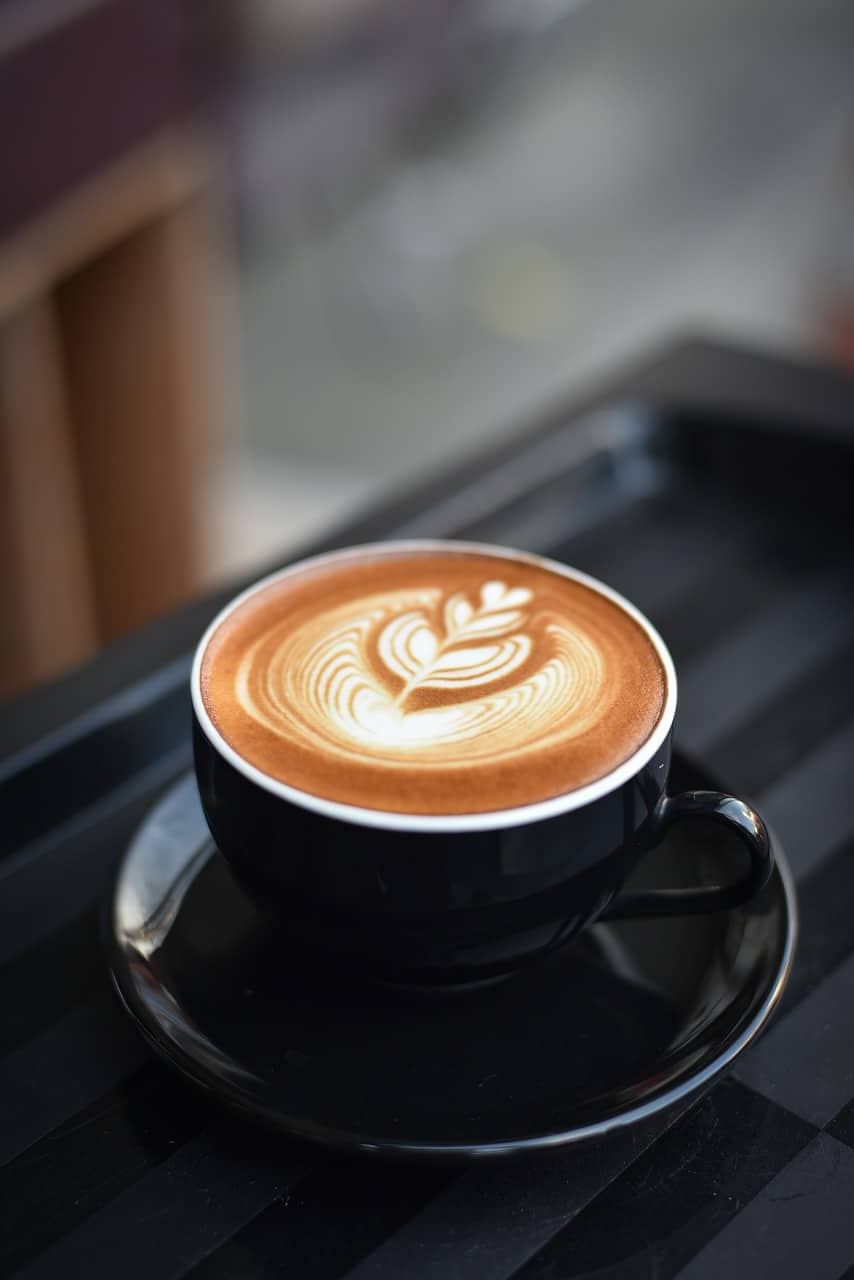
Credit: greenglobaltravel.com
Sustainable Coffee Practices
The quest for the best coffee in the world often leads us to consider the quality of the beans, the unique flavors, and the regions they come from. But there’s another crucial factor that can’t be overlooked: sustainability. Sustainable coffee practices ensure that our favorite brew is not only delicious but also kind to the planet and its people. These practices include fair trade agreements, organic certifications, and more. Let’s dive deeper into what makes a coffee truly sustainable.
Fair Trade
Fair trade coffee focuses on creating a fair and supportive relationship between coffee farmers and buyers. When you buy fair trade coffee, you support:
- Fair Prices: Farmers receive a minimum price for their coffee, which protects them from market fluctuations.
- Community Development: Fair trade premiums fund community projects such as schools, healthcare, and clean water.
- Better Working Conditions: Fair trade standards ensure safe and healthy working conditions for farmers.
These benefits improve the lives of coffee farmers and their families. They also ensure a more stable and sustainable coffee supply chain. Here’s a quick comparison table to understand the impact of fair trade:
| Aspect | Conventional Coffee | Fair Trade Coffee |
|---|---|---|
| Price Stability | Unpredictable | Guaranteed Minimum Price |
| Community Benefits | Limited | Funded Projects |
| Working Conditions | Variable | Regulated and Safe |
By choosing fair trade coffee, you contribute to a more equitable world. You help create a positive impact on the lives of the farmers who grow your coffee.
Organic Certification
Organic certification in coffee farming means that the coffee is grown without synthetic fertilizers, pesticides, or genetically modified organisms (GMOs). Organic farming practices benefit:
- Environmental Health: Reduces pollution, conserves water, and enhances soil quality.
- Farmer Health: Farmers avoid exposure to harmful chemicals.
- Quality of Coffee: Organic coffee often has richer flavors due to natural growing processes.
Organic certification also includes rigorous standards and inspections. These ensure that the farming practices meet the strict guidelines. Here’s a quick look at the key differences between conventional and organic coffee:
| Aspect | Conventional Coffee | Organic Coffee |
|---|---|---|
| Use of Chemicals | Permitted | Prohibited |
| Soil Health | Depleting | Enhanced |
| Water Conservation | Less Concern | High Priority |
Choosing organic coffee supports healthier ecosystems. It also ensures that the coffee you drink is free from harmful chemicals. This is better for both the environment and the people who grow and enjoy coffee.
Coffee Competitions
Finding the best coffee in the world can be a thrilling journey. Coffee competitions play a crucial role in identifying top-quality beans and exceptional brewing skills. These events bring together coffee enthusiasts, professionals, and experts to celebrate and evaluate the finest coffee. Let’s explore some of the most prestigious coffee competitions that help determine the best coffee in the world.
Barista Championships
The Barista Championships are renowned for showcasing the skills of the world’s best baristas. These competitions highlight the art and science of coffee making. Baristas demonstrate their expertise in crafting the perfect cup, from espresso shots to intricate latte art.
- Skills Displayed: Competitors show their mastery in brewing techniques, milk frothing, and flavor profiling.
- Judging Criteria: Judges assess based on taste, presentation, technique, and innovation.
- Global Reach: Barista Championships take place in various countries, culminating in the World Barista Championship.
Barista Championships are more than just competitions. They push baristas to innovate and refine their skills. These events often lead to new trends in coffee preparation and presentation. For coffee lovers, attending a Barista Championship is an opportunity to witness the craft of coffee making at its finest.
| Event | Location | Year |
|---|---|---|
| World Barista Championship | Various International Cities | Annually |
| National Barista Championships | Individual Countries | Annually |
Cup Of Excellence
The Cup of Excellence is a prestigious competition that focuses on identifying the best coffee beans from around the world. Coffee growers submit their finest beans, which are then rigorously evaluated by a panel of experts.
- Bean Selection: Coffee farms enter their beans for evaluation.
- Rigorous Testing: Beans undergo multiple rounds of cupping and scoring.
- Auction: Winning beans are auctioned to international buyers.
The Cup of Excellence is known for its stringent evaluation process. Each bean is judged on various criteria, including aroma, flavor, acidity, and balance. This competition helps coffee growers gain recognition and fetch premium prices for their high-quality beans.
Winning the Cup of Excellence is a significant achievement. It can elevate a coffee grower’s reputation and open doors to new markets. For coffee aficionados, tasting Cup of Excellence beans is a chance to experience some of the world’s finest coffee flavors.
| Country | Top Scoring Coffee | Year |
|---|---|---|
| Brazil | Fazenda Santa Ines | 2021 |
| Colombia | La Palma y El Tucán | 2022 |
Consumer Preferences
When discussing which is the best coffee in the world, consumer preferences play a crucial role. Different factors shape these preferences, ranging from individual tastes to cultural influences. Consumers today are more informed and experimental, leading to diverse trends in coffee consumption.
Trends In Coffee Consumption
Several trends have emerged in recent years, highlighting the evolving nature of coffee preferences:
- Specialty Coffee: More consumers are drawn to specialty coffee, appreciating the unique flavors and quality. This includes single-origin coffee, which is sourced from specific locations known for their distinct taste profiles.
- Sustainable Choices: There’s a growing demand for ethically sourced coffee. Consumers prefer brands that support fair trade practices and environmental sustainability.
- Cold Brew: Cold brew coffee has gained popularity, especially among younger demographics. Its smooth, less acidic taste appeals to many.
- Convenience: Ready-to-drink coffee options are on the rise. Busy lifestyles push consumers towards convenient choices like bottled cold brew and coffee pods.
Below is a table showcasing the popularity of different coffee types among consumers:
| Coffee Type | Popularity (%) |
|---|---|
| Specialty Coffee | 40% |
| Sustainable Coffee | 30% |
| Cold Brew | 20% |
| Convenient Options | 10% |
Cultural Influences
Culture plays a significant role in shaping coffee preferences. Different regions have unique traditions and tastes that influence consumer choices:
- Italian Espresso: Italy is renowned for its espresso culture. Italians prefer strong, short coffee shots, often enjoyed standing at a bar.
- American Coffee: In the U.S., drip coffee is common. Large cups and a milder taste characterize American coffee culture.
- Turkish Coffee: Turkey has a rich coffee tradition. Turkish coffee is thick and strong, brewed in a special pot called a cezve.
- Japanese Coffee: Japan’s coffee culture emphasizes precision and quality. Pour-over methods and single-origin beans are highly valued.
The table below illustrates the preferred coffee types in different countries:
| Country | Preferred Coffee Type |
|---|---|
| Italy | Espresso |
| United States | Drip Coffee |
| Turkey | Turkish Coffee |
| Japan | Pour-over Coffee |
Understanding these trends and cultural influences helps in identifying the best coffee in the world. It is a blend of quality, sustainability, and tradition.
Frequently Asked Questions
What Is The Top 1 Coffee Brand In The World?
The top coffee brand in the world is Starbucks. Known for its high-quality coffee, it has a global presence.
What Is The #1 Selling Coffee In America?
The #1 selling coffee in America is Folgers. It is known for its rich flavor and consistent quality.
Which Country Is No 1 Coffee In The World?
Brazil is the top coffee producer in the world. It leads in quality and quantity of coffee production.
Which Coffee Brand Is Best To Drink?
The best coffee brand depends on personal preference. Popular choices include Starbucks, Dunkin’, and Lavazza. Try different brands to find your favorite.
Conclusion
Finding the best coffee is a personal journey. Each blend offers unique flavors. Some people love the rich taste of Brazilian beans. Others prefer the smoothness of Ethiopian coffee. Your taste buds are the ultimate guide. Try different coffees and explore the world of flavors.
Visit local cafes or order online to sample various origins. Discover what excites your senses. Remember, the best coffee is the one you enjoy most. So, sip slowly, savor each cup, and enjoy the adventure. Happy coffee tasting!

